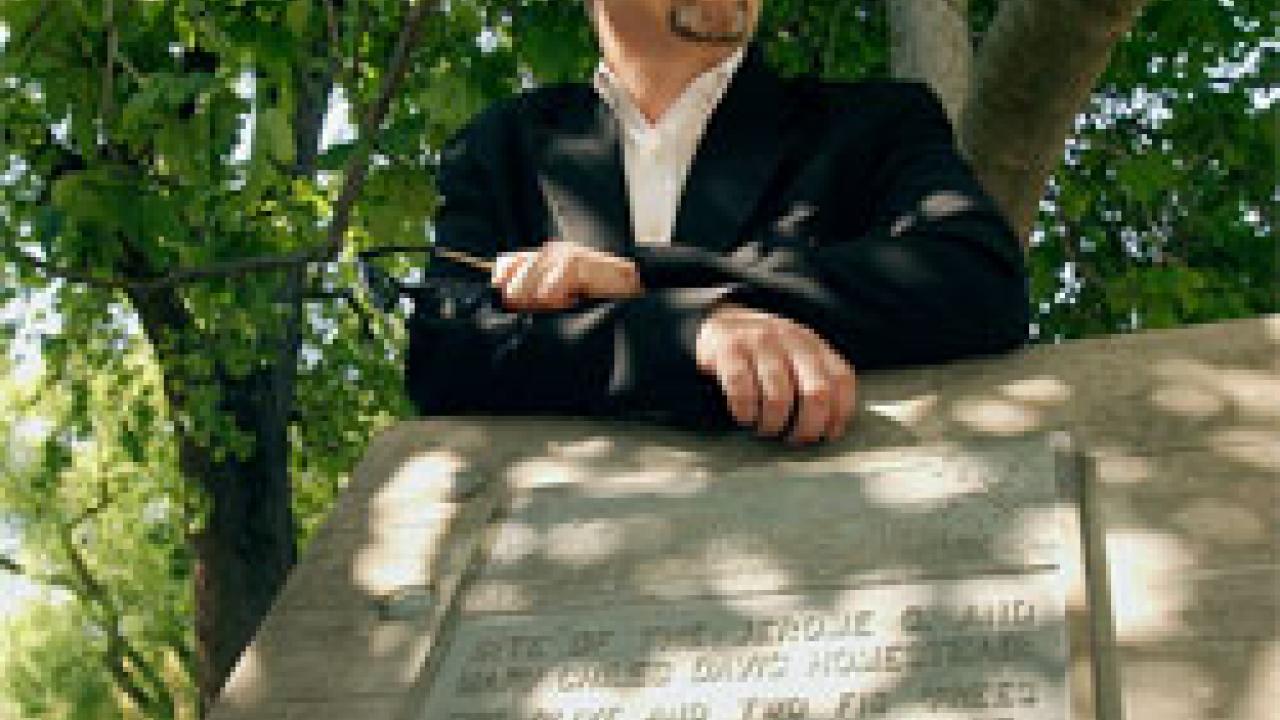There are oak trees living in the UC Davis Arboretum whose acorns fed Wintu Indians 400 years ago; fig trees in Sproul Hall's courtyard whose fruits sweetened meals on Mary and Jerome Davis's ranch in 1860; and redwood trees on the Quad that have shaded 70 years of picnics, political rallies, cultural festivals and quiet study.
They are the emeriti of the campus forest, and next Friday the UC Davis Grounds Division will launch a new program designed to ensure that as those grand old trees ease into retirement, there will be young and middle-aged trees ready to take their place.
"These wonderful trees that we have, they are precious," said Grounds Division director Sal Genito. "But they are nearing the ends of their lives and we have got to start thinking about how we are going to protect the ambience of the campus for the next generation and the people who will enjoy them after we are long gone."
Genito has planned a kickoff event for the new "UC Davis 100 Year Tree Plan" for Friday, April 29.
At 10 a.m., everyone in the campus community is invited to gather on the Quad for a large-scale tree planting. Student volunteers and staff groundskeepers will plant 100 "Centennial Trees" and a group photo will record the event. "It would be awesome to have a big turnout for the photo," Genito said. "It would show those folks that are here in 2105 how much we cared in 2005 to give them the same special park-like campus we all enjoy today."
The 100 Year Tree Plan provides the means for interested individuals, departments, units and clubs to support the tree program. For $100, a tree will be planted in the sponsor's name. (For more information, see http://grounds.ucdavis.edu.)
Warren Roberts, superintendent of the UC Davis Arboretum, has been instrumental in protecting trees on the campus for decades. He is delighted with Genito's plans. "Gosh, it's a dream come true," Roberts said. "After all these years, to see improvement and a plan for the future is very exciting."
Genito calls the major elements of the tree plan "Tree CPR":
- Cultivation: Ensuring a healthy start for young trees with assiduous pruning, fertilizing, aerating and irrigating.
- Preservation: Helping large, mature trees live as long as possible with continuing maintenance, such as irrigation, mulching, and disease and pest control.
- Restoration: Promptly replacing trees that die or must be removed.
As Genito was developing his ideas for preserving the campus tree canopy, he commissioned a study — a "tree resource analysis" — by the Center for Urban Forest Research, a U.S. Forest Service program housed in the campus's Department of Environmental Horticulture. Led by Greg McPherson, the center helps communities use trees more effectively to conserve energy, reduce air and water pollution and increase home values.
The study, delivered to Genito in December, says trees do all those things for the UC Davis campus and more: "They provide a sense of permanence and tradition, invoking social interaction and a sense of place … making UC Davis a more enjoyable place to study, live, work and recreate."
The 17,000 trees in the campus forest cover one-fifth of the campus core area, the study found. They save the campus $65,000 in energy costs and $58,000 in erosion control and pollution prevention yearly. Their shade value exceeds $430,000 yearly. Overall, the campus forest is an asset worth a cool $31 million.
However, there are problems: Too few new trees of large species are being planted to replace the campus's many big trees, such as the cork oaks around the Quad, as they die off. And 14 percent of existing trees are considered unhealthy because of water stress, disease or structural damage.
